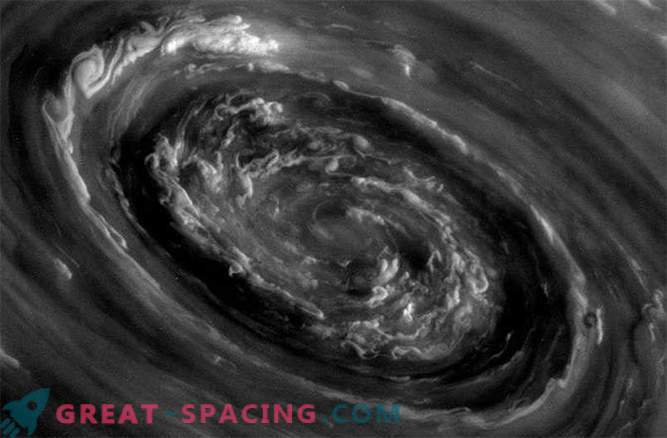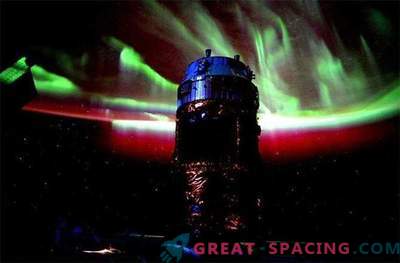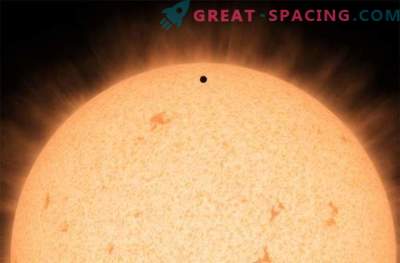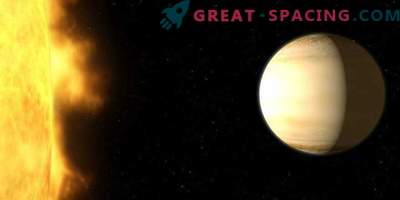
A large number of thunderstorms in the atmosphere of Saturn, possibly, are the result of the activity of the huge polar cyclones of the gas giant - such conclusions were made from the observations of the NASA Cassini spacecraft. In addition, these studies are designed to help astronomers to study in the future large-scale thunderstorm atmospheric phenomena on other exoplanets that are at a distance of tens and hundreds of light years from our planet.
For many decades, powerful, swirling hurricanes have been a mystery. It was difficult for scientists to understand what is driving force for huge storms and why do they persist for so long?
In addition, Saturn's polar server cyclone is surrounded by a wrapping hexagonal rotation of the atmosphere. This rotation creates a semblance of a certain hexagon, which is formed as a result of the rotation of the turbulent vortices surrounding the central vortex. Scientists are very important to understand which moving forces contribute to the emergence of such powerful atmospheric flows.
For comparison, on Earth, such vortex cyclones are caused by the flow of moisture over the oceans. But Saturn does not have such large volumes of moisture, so astronomers are looking for other causes of cyclones.
New research, published in the journal Nature Geoscience, using the planetary model of Saturn, concludes that the cause of such cyclones can be many small thunderstorms in the turbulent atmosphere of Saturn, which together form a huge vortex. “Before we saw it, it never occurred to us that there was a possibility of a hexagonal vortex in the universe,” said moderator Morgan O'Neill, a former graduate student at the Massachusetts Institute of Technology Earth, Planetary Science and Atmosphere (EAPS), and now a postdoc at the Weizman Institute in Israel. “Quite recently, Cassini gave us such a wealth of new observations that made it possible to see what we previously didn’t even guess, created new questions about why such polar cyclones are possible in the Universe.”
O'Neill's team created a simple model of the planet Saturn and its atmosphere that would model many small thunderstorms over time. Taking the simple dynamics as a basis, they found that many storms moved atmospheric gases to the poles. This mechanism is also known as “beta drift” - the culmination of huge cyclones at the poles of the planet.
In connection with the available information, the researchers were able to understand that the presence or absence of polar cyclones depends on two factors: “the presence of sufficient energy in the atmosphere of the planet, caused by the intensity of their thunderstorms; the average size of each thunderstorm relative to the size of the planet itself, ”writes the MIT press release. This means that more than the average size of a storm compared with the size of the planet, will create a higher likelihood of a long-lived polar cyclone. Observing other gaseous planets in our solar system, O'Neill and his team confirmed their assertions using the example of Jupiter and Neptune. They found that according to their model, Jupiter is the largest planet in the solar system, and it is unlikely that storm cyclones could ever arise on the poles, while on Neptune, a medium-sized planet, short-lived polar cyclones can occur.
Their model seems to be true for Saturn and Neptune, but astronomers have not seen clear pictures of the poles of Jupiter so far. This problem is intended to be solved by the Juno probe, which, according to NASA's mission, will arrive in Jupiter’s orbit in 2016, in order to study the planet from close range, including its magnetic poles. His research is designed to have interesting implications, including for the measurement of atmospheric conditions on distant exoplanets. This should provide an opportunity to identify planets in the universe, suitable for life, to identify alien worlds.
And now it remains only to wait for the first test to be made by Juno, arriving at the orbit of Jupiter.











































